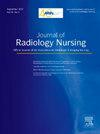Empowering Future Leaders in Radiology Nursing: Strategies for Success
Q3 Nursing
引用次数: 0
Abstract
Nursing leaders are essential in managing health-care operations and fostering a positive workplace environment. However, the increasing age of nurse leaders and their intent to leave their positions highlights the need for effective succession planning and leadership development. This article explores evidence-based strategies to create an empowering work environment that encourages high-potential nurses to pursue leadership roles. This article reviews leadership behaviors that attract future leaders, including shared governance, humble leadership, and modeling self-care and work–life balance. A hypothetical case study illustrates the application of these strategies in radiology. Shared governance and humble leadership involve empowering nurses by involving them in decision-making processes and valuing their input. This approach could significantly reduce burnout and enhance job satisfaction. Encouraging informal leadership roles means providing opportunities for nurses to assume leadership roles in projects and daily tasks. This helps improve self-efficacy and increases interest in pursuing formal leadership positions. Modeling self-care and work–life balance involves leaders prioritizing self-care and setting clear boundaries. In doing so, they inspire their teams to adopt similar practices, which contributes to a healthier and more balanced work environment. Implementing these strategies can create a supportive and empowering work environment, attract and retain future leaders, and ensure leadership continuity. This approach not only addresses current challenges, but also prepares the workforce to meet future demands, ultimately improving patient outcomes and the overall health-care environment.
授权未来的放射护理领导者:成功的策略
护理领导在管理保健业务和营造积极的工作环境方面至关重要。然而,护士领导年龄的增长和他们离职的意图凸显了有效的继任计划和领导力发展的必要性。本文探讨了基于证据的策略,以创造一个授权的工作环境,鼓励高潜力的护士追求领导角色。这篇文章回顾了吸引未来领导者的领导行为,包括共享治理、谦逊的领导、自我照顾和工作与生活的平衡。一个假设的案例研究说明了这些策略在放射学中的应用。共享治理和谦逊领导涉及通过让护士参与决策过程并重视她们的投入来赋予护士权力。这种方法可以显著减少职业倦怠,提高工作满意度。鼓励非正式的领导角色意味着为护士提供在项目和日常任务中承担领导角色的机会。这有助于提高自我效能感,增加追求正式领导职位的兴趣。自我照顾和工作与生活的平衡需要领导者优先考虑自我照顾和设定明确的界限。在这样做的过程中,他们激励自己的团队采取类似的做法,这有助于营造一个更健康、更平衡的工作环境。实施这些策略可以创造一个支持性和赋权的工作环境,吸引和留住未来的领导者,并确保领导力的连续性。这种方法不仅解决了当前的挑战,而且还使工作人员为满足未来的需求做好准备,最终改善了患者的治疗结果和整体保健环境。
本文章由计算机程序翻译,如有差异,请以英文原文为准。
求助全文
约1分钟内获得全文
求助全文
来源期刊

Journal of Radiology Nursing
Nursing-Advanced and Specialized Nursing
CiteScore
0.80
自引率
0.00%
发文量
95
审稿时长
57 days
期刊介绍:
The Journal of Radiology Nursing promotes the highest quality patient care in the diagnostic and therapeutic imaging environments. The content is intended to show radiology nurses how to practice with compassion, competence, and commitment, not only to patients but also to the profession of nursing as a whole. The journal goals mirror those of the Association for Radiologic & Imaging Nursing: to provide, promote, maintain , and continuously improve patient care through education, standards, professional growth, and collaboration with other health care provides.
 求助内容:
求助内容: 应助结果提醒方式:
应助结果提醒方式:


